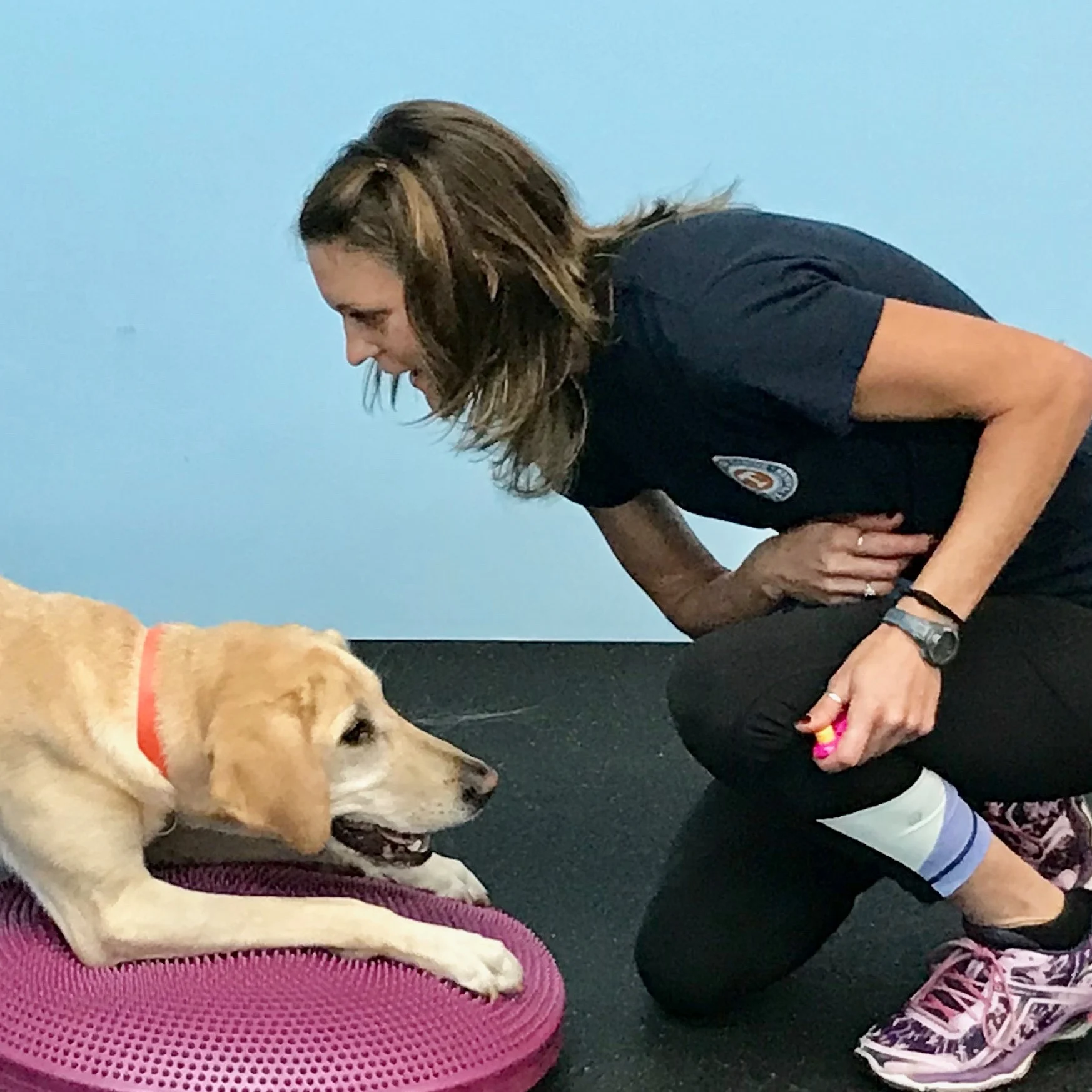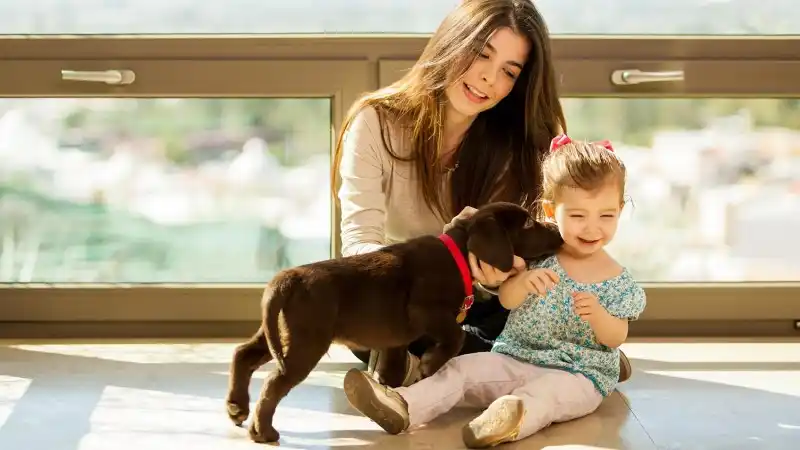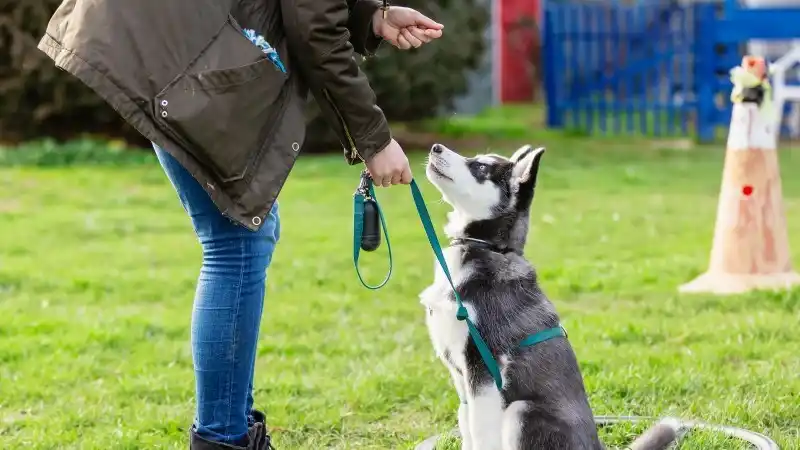How to Stop Your Dog from Barking
Knowing why your dog is barking is key to solving your pup's issues. Learn why your dog is barking and the steps to take to stop it from happening - for good.

One of the top questions from dog owners is “How do I quiet a barking dog?” Most of you don’t mind an alert bark to let you know that someone is at the door or in your yard, but when the barking is persistent, outrageously loud, or nagging, then you need to fix it. Follow the tips below to resolve the yip-yap and have a more peaceful home.
Determine What Is Causing the Barking
Is your dog getting enough daily stimulation? Top reasons for vocalizations are boredom and lack of mental and physical exercise. A tired dog generally offers fewer undesirable behaviors. In addition to outdoor walks, consider using more interactive dog toys, doing indoor exercise such as canine fitness training or dog treadmill work, and indoor play tocurb cabin fever.
Does your dog just want your attention or another dog’s attention? Beware - even negative attention is still attention, so a scowl and telling your dog to “be quiet” may fulfill their need to be acknowledged! Resist the urge to look at your barking dog or to scold them to be quiet (unless they know a "hush" command on cue already). Yelling at your dog to stop barking actually may make your dog bark louder because they think you are “barking” at the same thing or that you are also just “happy barking” and over-stimulated.
If your dog is barking at another dog, use your body as a wall – stand directly in front of your dog - so they can no longer see the other dog. It’s not fun to bark at something you can’t see.
If your dog is barking at you or excited-barking in general, play the “only quiet dogs get good stuff” game explained below.
Play “Only Quiet Dogs Get Good Stuff”
The second your dog starts to bark, you promptly:
Leave the room without your dog – duck into the bathroom without your dog for ten seconds - so they lose their best friend. The dog will think, “Whenever I bark, you leave, and that is NOT what I want.” Return when the dog has been quiet for a few seconds. Repeat your departure as needed. This works well when you’re home with your pooch.
Leave the stimulating situation together for a few seconds. Have your dog on leash so you can guide them to exit with you. Return when your dog is quiet. Reward and calmly praise your dog for being soundless. Leave again if your dog starts to “sing.” This works great if you have a barking dog in dog training class or when you exit the car at a park or in a parking lot. It may take 20 repetitions in a row of leaving to get the message across to your dog that you cannot stay in dog class when they bark! This is worth the effort.
Interrupt the barking by gently guiding your dog by their collar to their crate for a 5-10 second time out. This works best at home. When the dog is silent in their crate for 5-10 seconds, let them out. If they bark again, put them back into the crate. This will teach your dog that only polite dogs get freedom around their owners and/or houseguests.
Ask any guests to retreat (back off) until your dog is serene and muted. You can work on this version in public or at home for a dog who excited-barks when people approach or touch them. Your dog will learn that they only get to be near people and get petted when they're silent.
Don't Let Other People Reinforce the Barking
Perhaps your dog is barking at people who walk by your front window. Your dog actually thinks they are making those “bad guys” go away. The easiest fix for this is to block their view. Keep your shades closed when you’re not home or when you can’t work on modifying the behavior. Modifying the behavior means that you would reward your dog for being noiseless when they see people through the window. You could also play the “see the dog” game, which is described at the end of the following blog.
Reward Good Behavior
Do not take these quiet times or offered behaviors for granted! If your dog sees another dog barking and doesn’t holler back, treat and praise your dog. If your dog doesn’t bark at someone they see outside the front window, treat and praise your dog. You can also work to slowly increase the amount of time that your dog must be mute between treats to build silence stamina.
Consider Teaching a Speak Command
Some owners teach a dog to speak and bark continuously until the dog is released from the barking behavior. Thus, the dog learns to bark and then to stop yapping on cue with a “hush” command. This does not work for every dog, as some dogs will find the act of barking extremely reinforcing and fun in itself – not many things, even a treat, can out-trump how fun it is to be loud for some dogs.
Beware of creating the wrong pattern. If your dog barks, is quiet of their own free will or per your “hush” command, and then gets a treat every time, your dog may figure out the easiest way to get food is to bark first, because barking is eventually followed by food!
Teach An Alternate Behavior
If you don’t mind a quick alert bark that a stranger is approaching your home, teach your dog that one quick bark to alert you is ok. Say “thank you” in a happy voice and follow it with another command, such as a “go to your bed.” Then you can have houseguests enter a quiet home instead of letting them into a home with a barking dog. Your dog will learn that when people approach the front door, they can bark once and then should go zooming to their bed for a treat. Dogs do best when they know how they are supposed to act, so give your dog something else to do (like lying on their bed) while you let houseguests in or receive a package. For more information on mastering barking at the door, “Fired Up, Frantic, and Freaked Out” offers a great step-by-step protocol and is written in a friendly, easy-to-read tone.
Final Woofs of Advice
The longer a dog has had a “barking problem,” the longer the habit has been engrained in their brain and the longer it will take you to retrain your dog. Start your retraining now!
Take some of the stress out of pet ownership with Accident & Illness Coverage from AKC Pet Insurance (underwritten by Independence American Insurance Company). Our pet insurance plans are designed to be there when you need them, allowing you to focus more on the health of your pet and less on costly veterinary bills. Click here for a quote today!

Jasey Day holds the Certified Canine Fitness Trainer (CCFT) credential through the University of Tennessee. She is a member of the Bobbie Lyons K9FITteam - a team of compassionate canine fitness instructors who actively teach others and continually expand their own knowledge. Since 2004, Jasey has taught a variety of workshops and classes on the following: Puppy, Canine Good Citizen/Family Pet, Advanced Family Pet, Canine Fitness, Canine Swimming, Rally, and Agility. In addition, Jasey has earned over 60 titles in Dock Diving, Agility, Rally, CGC and Trick Dog. Jasey has worked full time for the American Kennel Club since 2007 and teaches at Care First Animal Hospital in Raleigh, NC. Jasey’s Labrador Retrievers spend their free time hiking, training, and snuggling with Jasey.
READ MORE ARTICLES

